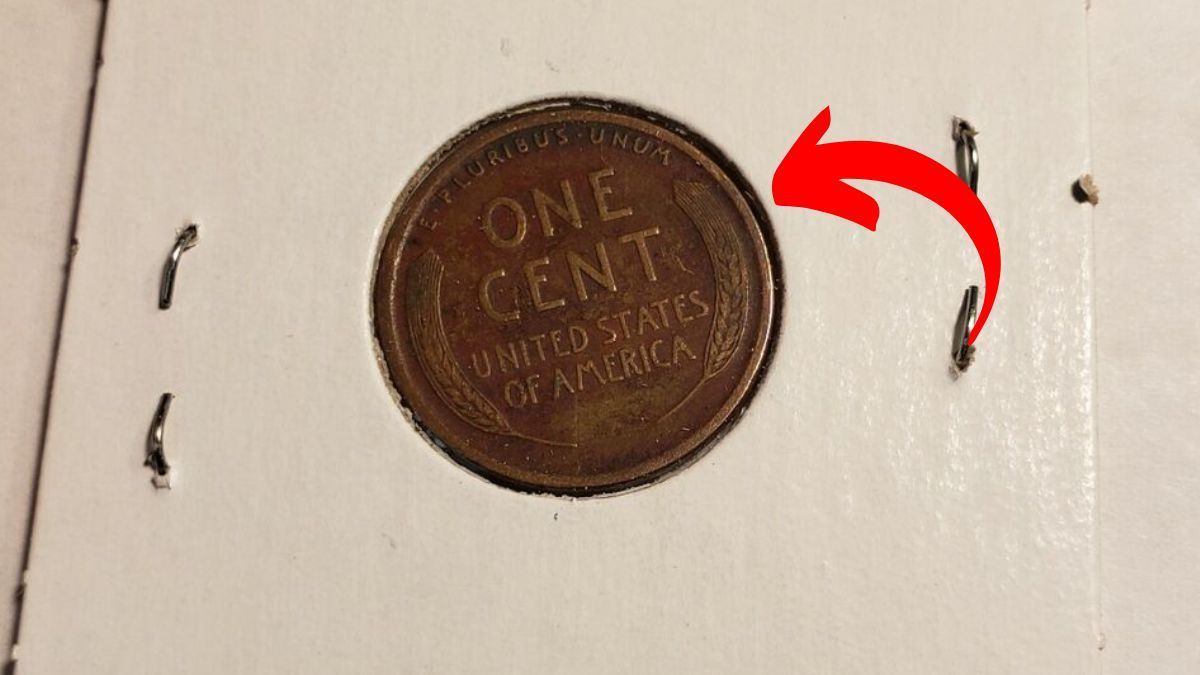The Lincoln Wheat Penny Valued at $4.2 Million: In the fascinating world of numismatics, few stories capture the imagination quite like that of the Lincoln Wheat Penny. The idea that a simple one-cent coin could be worth millions of dollars seems almost impossible, yet the 1943 Copper Lincoln Wheat Penny stands as a testament to how historical circumstances, rare minting errors, and collector demand can transform an ordinary piece of currency into an extraordinary treasure worth $4.2 million.
The Birth of an American Icon
The story of the Lincoln Wheat Penny begins in 1909, marking a significant milestone in American coinage. The U.S. Mint introduced this penny to commemorate the centennial of President Abraham Lincoln’s birth, making it the first U.S. coin to feature an American president’s portrait. The coin’s distinctive design, featuring Lincoln’s profile on the front and two elegant wheat stalks on the reverse, would become a familiar sight in American pockets for nearly half a century, until its retirement in 1958.
The World War II Connection
The most valuable Lincoln Wheat Pennies emerged from one of America’s most challenging periods – World War II. In 1943, as the nation focused its resources on the war effort, the U.S. government made a strategic decision to conserve copper for military equipment and ammunition. This led to a dramatic change in penny production, with the Mint switching to zinc-coated steel for that year’s pennies instead of the traditional copper composition.
The Million-Dollar Mistake
What makes the 1943 Copper Lincoln Wheat Penny so extraordinarily valuable is that it was never supposed to exist. During the transition to steel pennies, a small number of copper planchets (coin blanks) from 1942 remained in the coin presses. These copper planchets were accidentally fed into the machines, resulting in the creation of approximately 20 to 40 copper pennies that year. This mistake, born from the chaos of wartime production changes, would create one of the most sought-after coins in American numismatic history.
The Journey to $4.2 Million
The value of the 1943 Copper Lincoln Wheat Penny has grown exponentially over the decades. The combination of its extreme rarity, historical significance, and the fascinating story behind its creation has driven its worth to astronomical heights. The record-breaking sale of one specimen for $4.2 million at a private auction represents the pinnacle of its value, making it one of the most expensive pennies ever sold.
Authentication and Identification
For those hoping to discover one of these rare treasures, proper identification is crucial. The genuine 1943 Copper Lincoln Wheat Penny has several distinctive characteristics that set it apart from its more common steel counterparts. The most obvious is its color – while the standard 1943 pennies have a silvery appearance due to their steel composition, the rare copper versions display the familiar brownish copper tone of traditional pennies.
A simple but effective initial test involves using a magnet. The common steel pennies from 1943 are magnetic and will stick to a magnet, while the copper versions will not. However, this alone is not sufficient for authentication, as counterfeiters have been known to alter dates on copper pennies from other years. Professional authentication through recognized services like PCGS or NGC is essential for any suspected rare penny.
The Hunt Continues
What makes the story of the 1943 Copper Lincoln Wheat Penny particularly intriguing is that some of these valuable coins may still be in circulation. While most have been discovered and are now in private collections or museums, numismatic experts believe that a few specimens might remain undiscovered. This possibility continues to inspire collectors and casual observers alike to examine their loose change more carefully, hoping to find one of these elusive treasures.
Historical Significance
Beyond its monetary value, the 1943 Copper Lincoln Wheat Penny represents a unique intersection of American history. It tells the story of a nation at war, of manufacturing processes adapted for the war effort, and of how even small mistakes can become incredibly valuable over time. The coin serves as a tangible connection to World War II, representing both the sacrifices made for the war effort and the occasional imperfections in even the most carefully planned changes.
Impact on Coin Collecting
The extraordinary value of the 1943 Copper Lincoln Wheat Penny has had a lasting impact on the coin collecting community. Its story has inspired generations of collectors and has helped maintain interest in numismatics as a hobby and investment opportunity. The possibility, however remote, of finding such a valuable coin in ordinary circulation adds an element of excitement to coin collecting that few other specimens can match.
Preservation and Future Value
For the few known specimens of the 1943 Copper Lincoln Wheat Penny, preservation is paramount. These coins are typically stored in climate-controlled environments and protected in specialized holders to prevent degradation. Their value is expected to continue appreciating over time, as their historical significance and rarity only increase with passing years.
The $4.2 million Lincoln Wheat Penny stands as a remarkable example of how historical circumstances, rarity, and collector interest can transform a humble cent into a multi-million dollar treasure. While finding one of these rare pennies might be akin to winning the lottery, their story continues to captivate both serious collectors and casual observers. It reminds us that sometimes the most valuable things can come in the most unexpected packages, and that history can leave its mark in the most surprising ways.
Whether or not another 1943 Copper Lincoln Wheat Penny is ever discovered in circulation, its legacy as one of the most valuable and intriguing coins in American numismatic history is secure. For coin collectors and history enthusiasts alike, it represents the perfect combination of historical significance, rarity, and the eternal hope of discovering treasure in everyday places.




